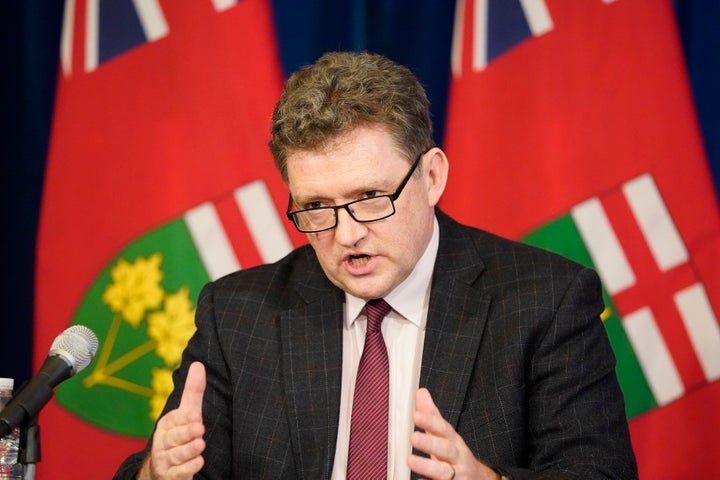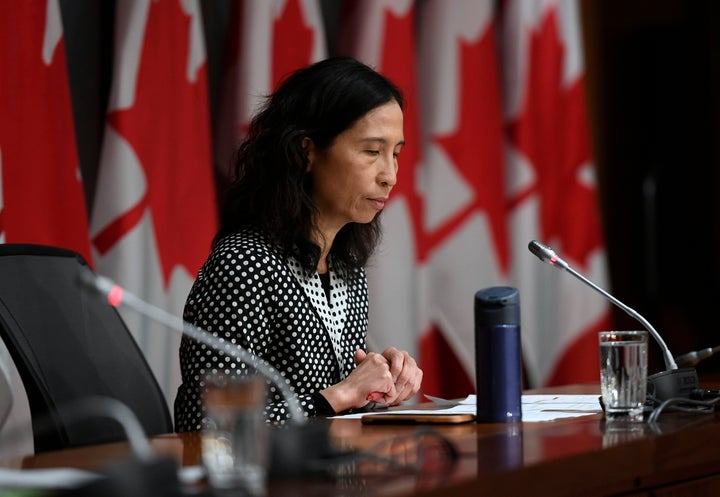
TORONTO — If Ontario continues on its current trajectory with the physical distancing measures in place, the province will see 80,000 cases of COVID-19 and 1,600 deaths by the end of April.
Over the course of the pandemic, which may last up to two years, between 3,000 and 15,000 people in Ontario could die from COVID-19, according to projections released by provincial public health officials on Friday.
“If we follow the rules, if we do our best to socially distance, if we look after the elderly and the vulnerable in our society, we can get within that range. And we can strive to get as low as possible within that range,” said Dr. Peter Donnelly, president and CEO of Public Health Ontario, at a media briefing.
“We are in a full-out battle.”
- Ontario Premier Doug Ford
Donnelly warned the province is modelling “a brand new viral disease” and therefore their numbers are “very inexact.”
Premier Doug Ford — who first saw the numbers Thursday — broke down what 1,600 deaths from COVID-19 by the end of April would look like: “That’s 50 a day, or two people every hour. Each one could be your brother, your sister, your mother, your father, your grandparents or a friend. This virus could hit any one of [us] because this is a terrible virus that doesn’t discriminate. We are in a full-out battle.”
Watch: Canadian cities gear up for worst-case scenario of COVID-19. Story continues below.
If Canada’s governments had not implemented any physical distancing measures, the models show there could’ve been 300,000 cases of COVID-19 and 6,000 deaths by the end of April, and 100,000 deaths in total in Ontario alone, Donnelly said.
“Thankfully, that is not the position that we are in because of the very detailed actions ... which have been taken in response to emerging science,” said Donnelly. “We believe that if we do all that we can we can get a much better end result for the province.”
Every year in Ontario, about 1,350 people die of the flu, he said.
This month, 4,400 lives will be saved from COVID-19 because, for the most part, people have self-isolated at home and followed public health’s advice. That has to continue, Ford said.
“We all have to ask ourselves, what is the cost of a life? Is a life worth a picnic in the park? Is a life worth going to the beach? Is a life worth having a few cold ones with your buddies in the basement? The answer is no,” said Ford.
Since the World Health Organization declared the pandemic in March, public health has gotten better at tracing COVID-19 cases to minimize the possible spread of the disease, said Donnelly. They’ve also increased COVID-19 testing, especially for long-term care and retirement homes.
Public health officials are going to add more measures, including:
- Reducing the types and numbers of essential workplaces
- Focusing on enforcing physical distancing rules with fines
- Expanding physical distancing in the retail sector
- Offering support for elderly, homeless and other vulnerable people and communities
- Potentially restricting entries to some communities, including First Nations
- Communicating more with the public about public health measures, including through cell phone alerts.
The province currently has 410 intensive care unit beds available for COVID-19 patients on top of the ones already being used, according to public health officials. Ontario’s health-care system can expand to 900 additional beds, but those might be filled within weeks.
Some hospitals are renting hotel rooms and creating field hospitals, said Health Minister Christine Elliott. Semi-employed and retired health-care workers can sign up online to join the front-line workforce. The province has so far received 10,000 applications, including from medical school students and nurses.
The models don’t account for the public wearing masks, which the World Health Organization has said there’s no evidence they prevent people from catching the virus. However, the U.S. is set to recommend that Americans wear them in public.
Ontario’s messaging continues to be that masks should be preserved for front-line workers, Donnelly said.

Federal health officials are working with modellers and epidemiologists to release Canada-wide “real-time information,” following the lead of Ontario and B.C., which released projections last week, said Canada’s chief public health officer Dr. Theresea Tam. Alberta is also working on making public province-specific numbers.
“When people see these models, remember that they are not real data,” Tam told reporters Friday. “They are projections for planning purposes.”
The models don’t reveal how long Canadians will have to maintain physical distance, but they do indicate the measures will need to be in place “for a considerable amount of time,” Tam said.
Prime Minister Justin Trudeau has stated it is “realistic” that measures are in place until July.
In Ontario, physical distancing measures could eventually be “selectively” lifted in places that have successfully reduced pressure on the health-care system and slowed the number of deaths, Donnelly said.
“I need to say that we are some way off before we could do that,” he added. “But the time to start thinking about that is now.”
One bright spot is that global research is indicating that a person will contract COVID-19 only once before developing immunity, Donnelly said.
“If enough people have got this disease, and then are immune to it, you do effectively move closer towards a situation where you would have what’s called ‘herd immunity,’” Dr. Donnelly .

- What are the cases of the new coronavirus in Canada? Take a look at our map.
- Want to apply for the new CERB? Here’s what you need to know.
- What’s the difference between the coronavirus and the flu?
- You’ve probably been hearing a lot about PPE. What it is — and how to donate it.
- Things are changing quickly: a cross-Canada look at which services are open and closed.